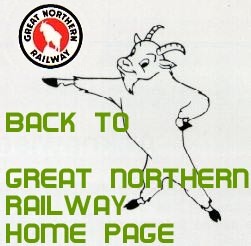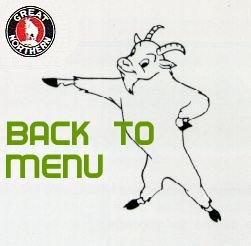|


| |
1962 IN REVIEW
Operating results were better, but tax savings were major factor in improved
net income.
The Financial Picture
Great Northern's 1962 net income of $25.0 million, equal to $4.12 per share,
compares with $18.6 million or $3.07 per share earned in 1961. The improvement
was about what had been expected, but the means of attainment was unusual.
Normally a rise of nearly $6.4 million in net would indicate substantially
improved operating results. However, traffic did not materialize in the volume
anticipated for 1962, and we experienced only a relatively minor step-up in
operations.
The principal factor in our higher net income was a decrease in Federal income
taxes resulting from the new depreciation guidelines of the U.S. Treasury and
the 7% tax credit enacted by Congress in 1962. The effect of these two changes,
with the consequent reduction in income tax payments, was a net income $5
million greater than otherwise would have been reported. There is a possibility,
however, that these benefits will have to be repaid at least in part at some
time in the future, although the eventual long-run effect is by no means clear.
Operating revenues in 1962 totaled $238.9 million, up $6.0 million or 2.6% from
1961. In performing additional service we incurred operating expenses of $187.9
million, an increase of $2.7 million over the previous year.
Employment costs, including wages and fringe benefits, were of course our
largest expense factor, the average hourly cost, including fringe benefits,
rising from $3.59 in 1961 to $3.70 in 1962. Despite a decrease in the number of
employes, total employment costs rose to $132.4 million, an increase of $800,000
from 1961.
Dividends of $18.2 million in 1962 were substantially the same as the previous
year, with the annual dividend continued at $3.00 per share.
Report on Operations
Just where were scored our improvement in operating revenues in 1962 is shown in
the following comparison of sources:
Source of Operating Revenues (in Millions):
Freight
1962...$209.2
1961...$204.9
Percent change is +2.1%
Passenger
1962...$11.7
1961...$10.1
Percent change is +16.1%
Mail and express
1962...$10.3
1961...$10.1
Percent change is +1.9%
All other operating
1962...$7.7
1961...$7.9
Percent change is -2.4%
Total
1962...$238.9
1961...$233.0
Percent change is +2.6%
Great Northern's year began disappointingly in that we failed to follow the
trend of improvement in the national economy. This was primarily because of
reduced grain tonnage from the poor 1961 harvest. The picture brightened with
the coming of spring, however, and even though traffic generally fell short of
expectations, by the end of 1962, we had reversed the downward trend of the
previous year. Also, an excellent grain harvest in much of our territory, stored
in near-record amounts, will have a favorable carry-over effect on 1963 revenues
as it moves to market.
Freight produced 90% of Great Northern's operating revenue in 1962. These are
some of our principal commodities and how they fared:
Commodity Revenues (in Millions):
Grain and grain products
1962...$47.1
1961...$50.0
Percent change is -5.7%
Lumber and wood products
1962...$39.2
1961...$37.1
Percent change is +5.8%
Iron ore, including dock charges
1962...$18.2
1961...$18.3
Percent change is -0.3%
Paper
1962...$13.5
1961...$13.2
Percent change is +2.7%
Forwarder traffic and less-than-carload traffic
1962...$10.1
1961...$10.4
Percent change is -2.9%
Aluminum ore and products
1962...$8.7
1961...$6.5
Percent change is +33.0%
Crude petroleum, petroleum products and asphalt
1962...$8.4
1961...$9.0
Percent change is -6.3%
Iron and steel products
1962...$5.9
1961...$5.4
Percent change is +8.9%
Automobiles and trucks
1962...$5.2
1961...$3.4
Percent change is +53.4%
Coal and coke
1962...$5.2
1961...$4.9
Percent change is +4.3%
Potatoes
1962...$3.4
1961...$3.4
Percent change is 0%
Great Northern's traffic fortunes are determined primarily by the overall state
of the national economy. While a diversity of industries and widely-separated
agricultural areas do tend to produce a balancing effect between increases and
decreases, as noted here, any marked change in the volume of the more important
commodities can affect the total revenue picture considerably.
A highly successful Seattle World's Fair can be credited, of course, with
stimulating much of the 16.1% increase in passenger revenues scored in 1962.
Transcontinental passenger trains ran at capacity during the summer months, and
a second section of the Western Star was required. Many other areas benefited
indirectly, as indicated by the increase of almost 100% in rail arrivals at
Glacier Park.
Our $11.7 million passenger revenues in 1962 also received a helpful boost from
The Big Mountain ski resort at Whitefish, Montana, which reported rail patronage
up 16% from 1961.
It should not be overlooked, however, that the net result of this improvement
was the reduction of a loss, since our 1962 revenues fell short of expenses
related solely to passenger service by $2.4 million. Considering that the loss
solely related to passenger train operations stood at a peak of $9 million as
recently as 1957, we have made encouraging progress in the direction of
profitable operation by continuing to attract patronage while reducing unneeded
and unpatronized service.
Great Northern's operating efficiency improved markedly in 1962. Gross ton miles
per freight train hour, which reflects the best possible loading of trains and
their speed, topped all previous records when it rose to 72,820 from 68,670 in
1961 - up 46% for the decade. Another important index of efficiency is freight
train speed, which averaged a record 22.6 miles per hour on the GN in 1962 - an
increase of 32% in the past 10 years.
While our program of capital expenditures for improvement was...
Continued on Page 9...
 
 
|